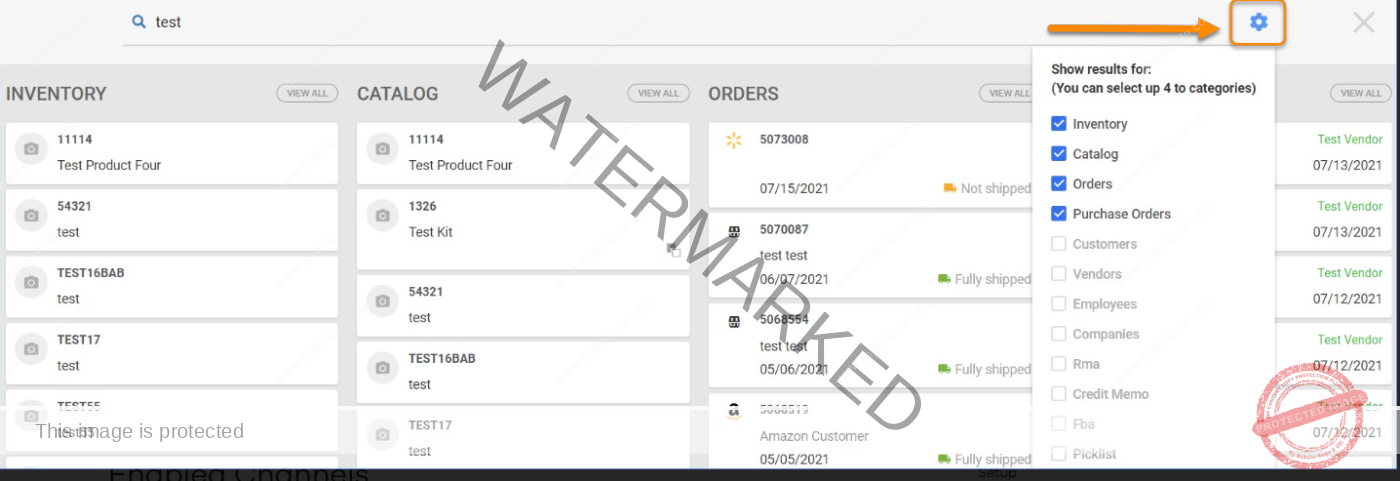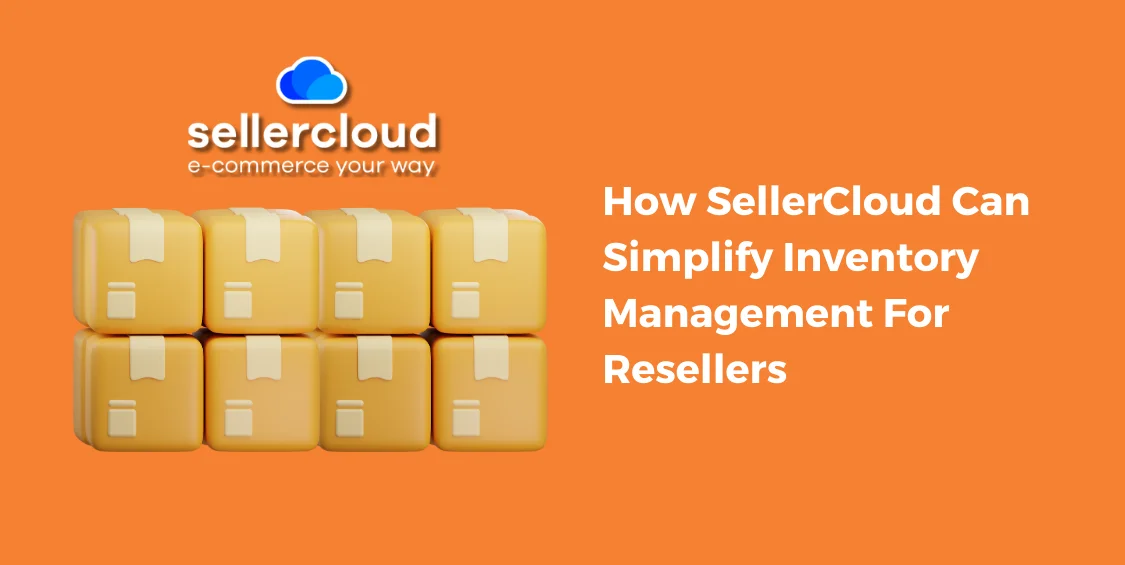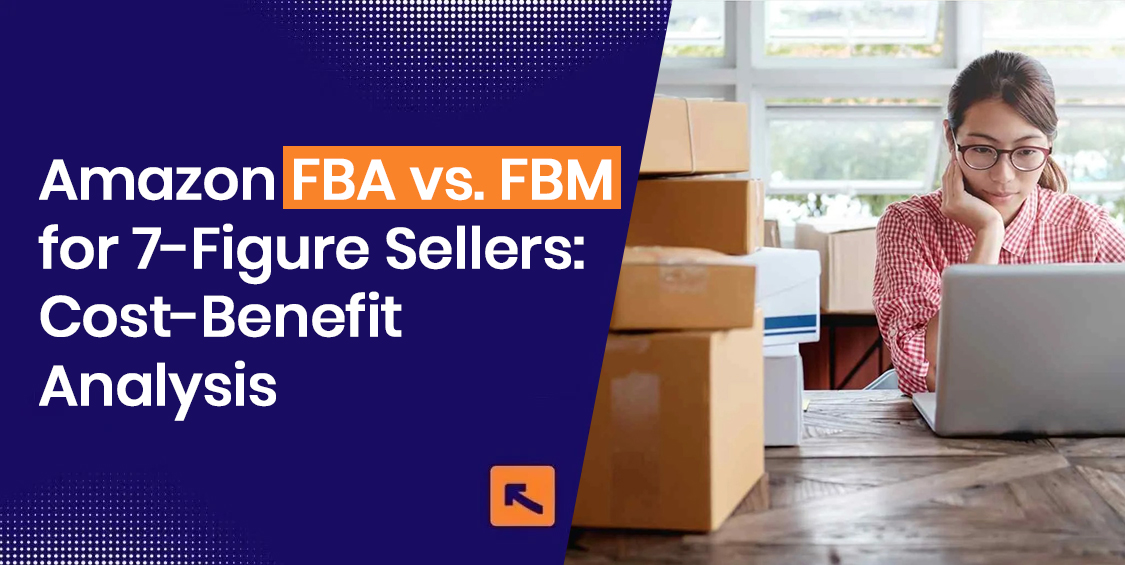SellerCloud is an omnichannel platform made for e-commerce businesses of all sizes. It coordinates stock levels across several online stores, generates shipping data, and offers real-time reporting. Users can access a centralized library through SellerCloud API to receive product details from many sources, such as Amazon listings and vendor feeds.
Explaining SellerCloud Software:
Sellercloud provides efficient inventory software for resellers that centralizes and coordinates everything from stock to product catalogs, orders to shipments, and automated emails to customer reviews. Sales performance by product and marketplace, as well as all financial data, may be generated by users. You can then collect all reports that can be exported to a wide range of well-known bookkeeping packages for further analysis.
How SellerCloud Streamlines Your Business Operations:
With SellerCloud, running an e-commerce store is more accessible than using different apps for managing your operations. This inventory software for resellers provides an all-encompassing product catalog with a single entry point. Its catalog management features a centralized repository for all information about your products, including pictures, descriptions, prices, and more. With this feature, you won’t have to re-enter information for each channel manually. In addition, customers can select their preferred shipping options for each item. SellerCloud provides a one-of-a-kind software for inventory management for resellers to keep tabs on items available to customers and internal users.
Related Reading: How to Protect Your Brand on Amazon Against Infringers
SellerCloud Integrations In eCommerce Business:
SellerCloud now integrates with and is expanding to support more than 100 channels, shopping carts, shipping partners, 3PL services, payment gateways, suppliers, prices, and apps. The number of channels you can combine is unlimited, except for one limitation: each business can only integrate with a single channel.
If you want to use three different Amazon integrations, you’ll need to create three separate companies, but you may use the same company for eBay, Amazon, and Walmart.
What is SellerCloud API?
The extensive Sellercloud API (Application Programming Interface) allows integration with other Amazon seller tools. Using the Sellercloud API, programmers may more easily create specialized programs that work well as integrations.
It provides Amazon sellers with specialized resources to improve their sales and operations. Among these offerings include:
- Sellercloud allows effective inventory management for resellers along with fulfillment processes without signing in and out of numerous systems.
- Sellercloud can assist with determining the optimal amount of items to send to each sales channel via a customized inventory feed.
- Amazon merchants can protect themselves from fraudulent returns using serial numbers and a tracking system. Using SellerCloud API, retailers can easily monitor the status of serialized items from when they are dispatched until they are delivered.
- The in-depth reporting features present in the SellerCloud API give merchants peace of mind by giving them a bird’s-eye view of their operations.
- The flexibility to tailor one’s experience is arguably SellerCloud’s strongest suit. The SellerCloud allows personalized plugins and features for inventory management for resellers to meet their business needs.
- Sellercloud API provides features to assist you in reining in overselling. You can avoid overselling items because everything is in sync with Sellercloud, and you always know where they are.
SellerCloud Integrations, Pricing, and Subscriptions
The number of orders you take through SellerCloud’s various sales channels will determine your price for using SellerCloud. These are separated into two categories: Amazon Fulfilled Orders and Standard Orders. However, Standard Orders pricing may be relatively more expensive than Amazon Fulfilled Orders.
This pricing scheme guarantees that all parties are not overpaying for their sales volume. In a nutshell, it ought to help you save money.
| Standard Orders | Amazon Fulfilled Orders |
| For orders between 1-5,000 – $0.25 per transaction For orders between 5,001-10,000 – $0.20 / transaction For orders between 10,001-30,000 – $0.15 per transaction For orders between 30,001-60,000 – $0.10 per transaction For orders between 60,001-120,000 – $0.05 per transaction | For orders between 1-5,000 – $0.10 per transaction For orders between 5,001-10,000 – $0.05 / transaction For orders between 10,001-30,000 orders – $0.04 per transaction For orders between 30,001-60,000 orders – $0.03 per transaction For orders between 60,001-160,000 – $0.02 per transaction For 160,001+ orders – $0.01 per transaction |
Apart from the overall pricing plans, there are particular initial outlays to consider before signing up for SellerCloud integrations. For example:
The installation and training cost may go up to at least $2,000.
There is a $500 monthly minimum charge (until your per-transaction fees rise above $500).
Incredible Customer Support
You can contact their support team via phone or email. SellerCloud provides documentation, guides, and tutorials if you’d rather learn independently than engage in conversation. Their Disc discrete video guides cover stock, orders, shipping, and reporting guide tutorials.
Advantages & Disadvantages of Using SellerCloud Integrations
| Your listing can be automatically updated throughout sale channels/markets. | Too many steps for integrating software may seem annoying to many users. |
| Sellercloud handles channel inventories for you. | The new design needs key essential features in the old one, which could have been easier to use. |
| With the Skustack Inventory Management system, order fulfillment is quick and easy, ensuring customer satisfaction every time. | There are two user interfaces (UIs) for SellerCloud; one is more straightforward but lacks some functionality in the original UI |
Exploring SellerCloud’s Inventory Software For Resellers
SellerCloud offers personalization to its SKU inventory management, making it specific to your business needs. We have discussed ways you can align your business information presented to you on SellerCloud’s interface.
Global Search Icon

If you know your product’s SKU, order number, or PO number, you can look it up on your SKU inventory management software instead of skimming through hundreds of SKUs. You can even look for different pages that exist in your software.
Under each category, you’ll see the results of your search. To change the available categories, select the ‘gear’ symbol. You can select up to four categories for the search results.
Menu Bar
You can customize the options that appear on your menu bar;
Step 1: Select the “Customize Menu” option at the bottom of your menu bar.

Step 2: Select the check box for the items you want to view in your menu bar and unselect the rest. You can even reposition the option sequence according to your needs.

Step 3: Once you’re done customizing your display items, don’t forget to click on save changes to see your customized menu bar.

Enabled Channels Option
You can select channels you want to be visible or hidden from the Company Settings Toolbox. By default, channels are enabled.
To enable a channel, go to Settings > Click ‘Client Settings’ › Select ‘Enabled Channels’ > select the channels you want to enable or show up under the Company Settings Toolbox.

Viewing ‘Order Status.’
You can personalize the way you want your interface to present your order statuses by following the steps mentioned:
Step 1: Go to Orders > Manage Orders > Select an Order.
Step 2: Click Edit.
Step 3: Click the ‘Gear’ icon in the top right corner of the status box
Step 4: Choose ‘Show in Statuses Panel’ or ‘Show as a Pill’
–‘Show as a Pill’ will display your order status in the pill-like icons.
–‘Show in Statuses Panel’ will display your order status in the Status panel, like the one below.
Commonly Asked Questions About SellerCloud Software:
What is SellerCloud, and what does it do?
Sellercloud is an omnichannel selling growth platform designed specifically for online stores. The goal is to aid the expansion of existing enterprises and provide a much simpler and more effective inventory management for resellers.
How does Sellercloud work?
The inventory software for resellers‘ stock levels and shipments gives instant reports and automates logistics. The system’s unified catalog is a one-stop shop for product details, with access to data from numerous channels like Amazon and manufacturer needs.
What is SellerCloud in Amazon?
SellerCloud’s FBA Consolidated Shipments feature makes submitting many orders to a single fulfillment center easy. You can easily manage every delivery process step when using aggregated shipments. Cut down on shipping expenses, shipment time, and packing materials.
How much is SellerCloud’s subscription cost?
Considering your business’s scope to estimate the software’s subscription cost is crucial. To help you calculate the approximate cost of the inventory software for resellers’ business, SellerCloud provides a cost estimator to help you grasp the regular outlay of your service. You can estimate your monthly subscription cost by entering your average monthly order volume.
Does SellerCloud charge businesses per order or a flat fee?
The essential monthly cost of using Sellercloud is $1100, although this amount varies greatly depending on how many orders you receive. You can check the price calculator on their official website to better understand their pricing plan.
How long do SellerCloud integrations take?
The implementation process duration is different for each business. It depends on several factors, such as how customized you need it to be, where you sell, how you fulfill orders, and how well-organized your inventory files are.





